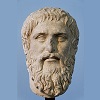12.8: A Roman Empire?
- Page ID
- 12418
Although the Carolingian Empire had collapsed in the ninth century and West Francia remained fragmented, in Central Europe, the rulers of East Francia formed a new empire on the wreck of Charlemagne’s. King Otto I of East Francia had defeated the Magyars in 955 (see Chapter Seven), and both Otto and his powerful nobles further subordinated the Slavic peoples to the east to his rule, forcing them either to submit to his direct rule or acknowledge him as their overlord. He followed up on the prestige gained from his victory over the Magyars by exercising influence in Northern Italy, intervening in a dispute between Pope John XII (r. 955 – 964) and Berengar, a petty king. On 2 February 962, Pope John XII crowned Otto as Roman Emperor in a ceremony meant to echo Pope Leo III’s crowning of Charlemagne over a century and a half before. Further, Otto deposed Berengar and added Italy to his domains.
Otto was the most powerful ruler in Europe besides the Byzantine emperor. His empire covered most of the German-speaking lands of Central Europe: indeed, Otto and its subsequent emperors would be Germans and the power base of this empire would be firmly Central European. This empire also encompassed northern Italy and much of the territory west of the Rhine. The rulers of this empire would call themselves Roman Emperors and consider themselves the successors to Charlemagne and thus to the Roman Empire. This empire, however, was more modest than Charlemagne’s. Although its emperors would claim that all Christian kings owed them obedience, most other realms of Western Europe were independent, especially West Francia (which we shall hereafter refer to as France). Likewise, this empire’s control of Northern Italy was always somewhat tenuous, since its rulers’ power was based in Germany, far to the north of the Alps.
.png?revision=1)
Because these emperors considered themselves to be Roman Emperors and also protectors of the Church—indeed, Otto I eventually deposed Pope John XII for improperly fulfilling his papal duties—historians call their empire the Holy Roman Empire and its emperors Holy Roman Emperors. The reader should carefully note that these emperors did not use either of those titles. They simply referred to themselves as Roman Emperors and their empire as the Roman Empire. We call the Empire the Holy Roman Empire and the emperors Holy Roman Emperors for the convenience of modern readers, so that they will know that they are reading about neither the Roman Empire, which dominated the entirety of the Mediterranean world in ancient times, nor the Byzantine Empire, a regional power in the Eastern Mediterranean for most of the Middle Ages.


